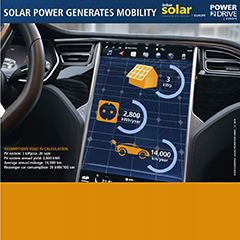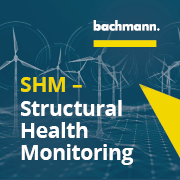E-mobility is driving deployment of photovoltaics
Munich, January 17, 2018 – Photovoltaics (PV) and e-mobility, the ideal combination: Driving with solar power is becoming increasingly attractive. When vehicles are fueled by electricity from renewable sources, e-mobility is more than just the clean and sustainable mobility solution of the future. It also drives the deployment of photovoltaics. Trade visitors at Intersolar Europe 2018, the world’s leading exhibition for the solar industry, will learn about the diverse prospects created for the environment by the combination of PV and e-mobility and about the new areas of business and sales markets which are opening up. This year’s event will be held June 20–22, and will be taking place for the first time within the new innovative platform The smarter E Europe in Munich, along with other leading energy exhibitions – including Power2Drive Europe, the new exhibition for e-mobility and charging infrastructure.
With e-mobility, the new energy world is picking up speed. Electric vehicles are the clean transportation of the future – but only if they are charged using clean power. This makes e-mobility a future driver of the PV market. Ideally, electric vehicles are charged with solar power directly from the owner’s roof. This is particularly profitable for PV systems with a capacity of up to ten kilowatts (kW), as these are now exempt from the EEG levy on self-consumption in Germany. At roughly ten to twelve euro cents per kilowatt hour (kWh), the self-generated power is less than half the cost of power direct from an electricity supplier. The distance a driver can cover with self-generated solar power depends primarily on the energy consumption of the vehicle. For example, a PV system with a capacity of 3 kWp in a single-family home in Germany can provide roughly 2,800 kWh annually. That is enough for electric vehicle owners to drive about 14,000 kilometers (8,700 miles) emission free.
Electric vehicles can be driven and charging stations can be fed with electricity from PV systems. This opens up new business models for PV companies and system owners, who can profit from solar filling stations, for example.
End in sight for 20-year feed-in tariffs which drove German market
In the coming years – beginning in 2022 – the first PV systems will reach the end of the 20-year period of feed-in tariffs paid under the German Renewable Energy Sources Act (EEG). This imminent development is another driving force behind the combination of PV and e-mobility. Now is the time for investors and plant operators to give thought to how the electricity can be used in the future. Different variations of self-consumption are moving further into the foreground.





















